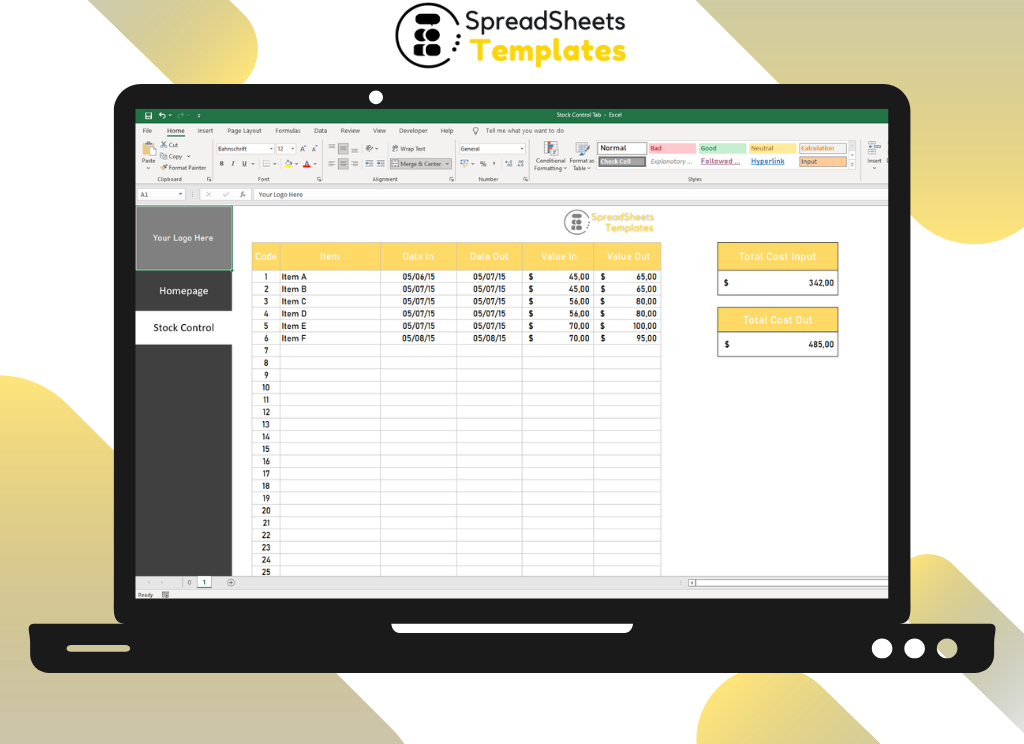Stock Control Tab Leave a comment
Optimizing Inventory Management for Business Success
Introduction
Welcome to our comprehensive guide on stock control tabs and their significance in optimizing inventory management for businesses. In today’s fast-paced and competitive market, efficient inventory management is crucial for the success and growth of any organization. With the help of stock control tabs, businesses can streamline their operations, minimize costs, and maximize profitability. In this article, we will delve deep into the world of stock control tabs, exploring their functionalities, benefits, and how they contribute to effective inventory management.
What is a Stock Control Tab?
A stock control tab is a digital tool or application that enables businesses to monitor and manage their inventory effectively. It provides a centralized platform for tracking stock levels, monitoring product movements, and generating insightful reports. By utilizing stock control tabs, companies can gain real-time visibility into their inventory, streamline their order fulfillment processes, and make data-driven decisions to optimize their stock management.
The Significance of Stock Control Tabs in Inventory Management
Stock control tabs play a pivotal role in inventory management, offering numerous benefits to businesses. Let’s explore some of the key advantages they bring to the table:
1. Real-Time Inventory Visibility
With stock control tabs, businesses can access real-time information about their inventory levels, including stock quantities, locations, and movement history. This visibility empowers companies to make informed decisions, avoid stockouts, and maintain optimal stock levels.
2. Streamlined Order Fulfillment
Efficient order fulfillment is essential for customer satisfaction and retention. Stock control tabs facilitate seamless order processing by automating various tasks, such as order tracking, picking, and packing. This streamlines the entire fulfillment process, ensuring timely deliveries and enhancing customer experience.
3. Demand Forecasting and Planning
Accurate demand forecasting is critical for managing inventory effectively. Stock control tabs offer advanced analytics and forecasting features that help businesses analyze past sales data, identify trends, and predict future demand. This enables companies to optimize their stock levels, reduce excess inventory, and prevent stock obsolescence.
4. Minimized Costs and Maximized Profitability
By optimizing inventory management, stock control tabs help businesses minimize costs associated with overstocking, stockouts, and inefficient order fulfillment processes. With better control over their stock, companies can improve operational efficiency, reduce carrying costs, and maximize profitability.
5. Data-Driven Decision Making
Stock control tabs generate comprehensive reports and analytics, providing businesses with valuable insights into their inventory performance. By leveraging these insights, organizations can make data-driven decisions, identify areas for improvement, and implement strategies to enhance their overall inventory management practices.
How to Effectively Implement Stock Control Tabs
Implementing stock control tabs requires careful planning and execution. Here are some steps to effectively utilize these tools for optimizing inventory management:
Step 1: Evaluate Your Inventory Management Needs
Before selecting a stock control tab, assess your inventory management requirements. Consider factors such as the size of your business, the complexity of your inventory, and the scalability of the solution. This evaluation will help you choose a stock control tab that aligns with your specific needs.
Step 2: Choose the Right Stock Control Tab
Research and evaluate different stock control tabs available in the market. Look for features such as real-time tracking, demand forecasting, integration capabilities, and user-friendly interfaces. Additionally, check for customer reviews and ratings to gauge the reliability and effectiveness of the chosen solution.
Step 3: Integrate with Existing Systems
Ensure seamless integration of the stock control tab with your existing inventory management systems, such as your point-of-sale (POS) software or enterprise resource planning (ERP) system. This integration will enable smooth data flow, avoid duplicate entries, and enhance overall operational efficiency.
Step 4: Train Your Team
Provide comprehensive training to your team members on how to effectively utilize the stock control tab. Familiarize them with its functionalities, reporting features, and best practices for inventory management. Regularly update your team on any system upgrades or new features to ensure they can leverage the tool to its full potential.
Step 5: Continuously Monitor and Improve
Regularly monitor and review your inventory management processes with the help of the stock control tab. Analyze the generated reports, identify any bottlenecks or areas for improvement, and implement corrective measures accordingly. Continuous monitoring and improvement are essential for maintaining optimal inventory management practices.
FAQs about Stock Control Tabs
Q1: How can stock control tabs benefit small businesses?
Stock control tabs offer significant benefits to small businesses by providing cost-effective inventory management solutions. They enable real-time visibility, streamlined order fulfillment, and accurate demand forecasting, helping small businesses optimize their stock management and maximize profitability.
Q2: Can stock control tabs be integrated with other software systems?
Yes, stock control tabs are designed to integrate with various software systems such as POS software, ERP systems, and e-commerce platforms. This integration ensures seamless data flow and enables businesses to centralize their inventory management processes.
Q3: Are stock control tabs suitable for businesses with multiple locations?
Absolutely! Stock control tabs are highly beneficial for businesses with multiple locations. They provide a centralized platform for tracking stock across various locations, ensuring accurate inventory management and enabling efficient stock replenishment.
Q4: Can stock control tabs help in preventing stockouts?
Yes, stock control tabs play a crucial role in preventing stockouts. By providing real-time visibility into stock levels, businesses can proactively monitor inventory and set automated reorder points. This ensures timely replenishment and minimizes the risk of stockouts.
Q5: Are stock control tabs suitable for businesses of all sizes?
Stock control tabs are suitable for businesses of all sizes. Whether you are a small-scale operation or a large enterprise, stock control tabs offer scalable solutions that can be tailored to your specific inventory management needs.
Q6: How often should I review and update my stock control tab settings?
It is recommended to regularly review and update your stock control tab settings based on changing market conditions, customer demands, and business requirements. Aim for periodic reviews to ensure your inventory management practices remain optimized.
Conclusion
Efficient inventory management is the backbone of a successful business. By implementing stock control tabs, companies can streamline their operations, reduce costs, and maximize profitability. Real-time visibility, streamlined order fulfillment, demand forecasting, and data-driven decision making are just a few benefits that stock control tabs bring to the table. Embrace these digital tools, and empower your business with optimal inventory management for long-term success.


